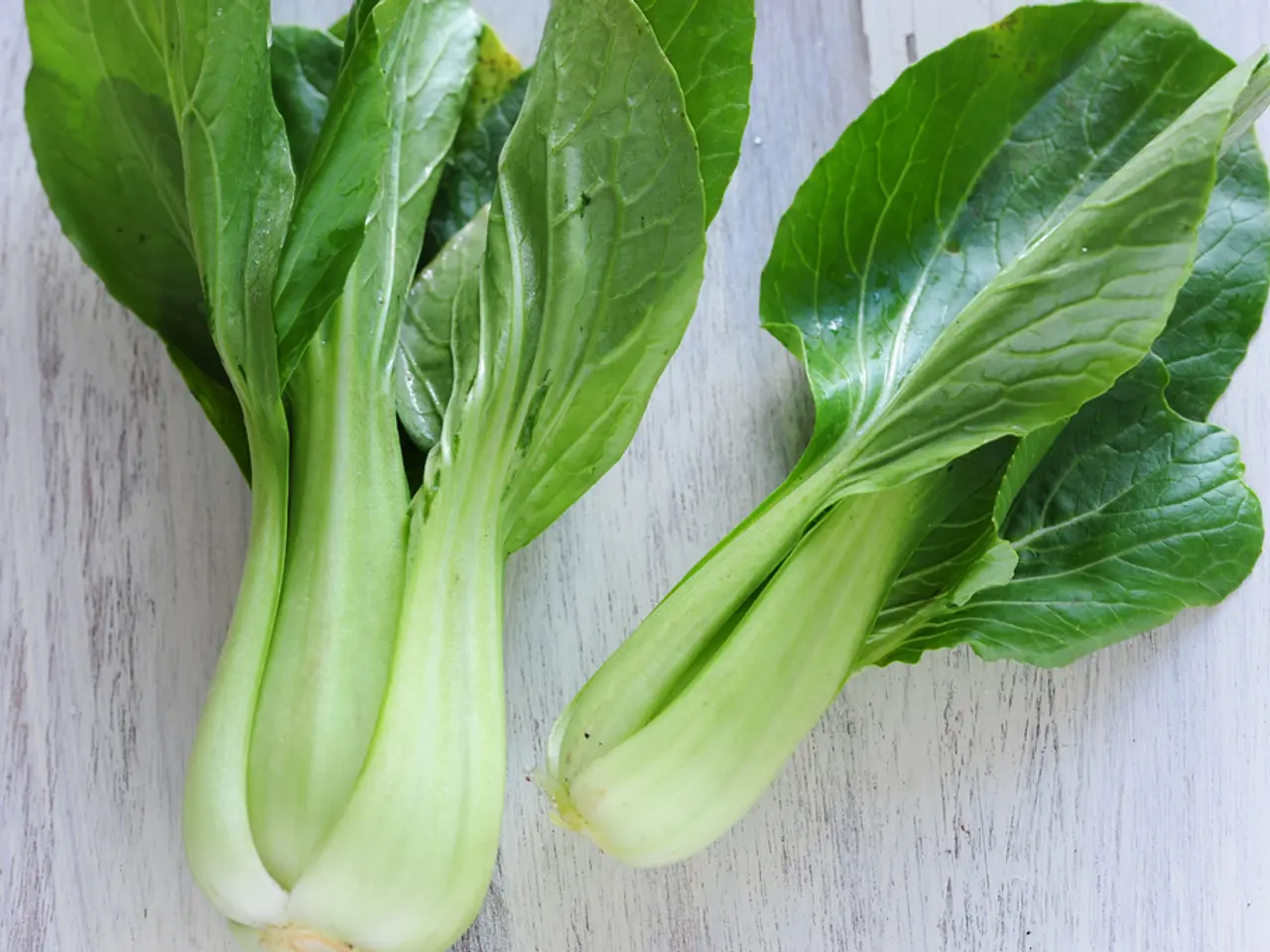Six Outstanding Green Foods and Their Benefits for Your Overall Health
Discover the world of nutrient-rich leafy greens that not only enrich your meals with diverse flavors but also boost your health. Here's a rundown of the top six leafy greens – arugula, Swiss chard, kale, mustard greens, bok choy, and spinach – and their unique nutritional benefits, health advantages, and distinctive flavors.
Nutritional Benefits
Arugula
Rich in vitamins A, C, and K, as well as calcium, potassium, and folate, arugula supports bone health, immune function, and reduces inflammation.
Swiss Chard
Swiss chard offers a variety of minerals like magnesium and potassium, making it beneficial for heart health and digestion.
Kale
Kale is packed with vitamins A, C, and especially K, along with calcium, potassium, and folate, providing powerful antioxidant support and cardiovascular benefits.
Mustard Greens
Mustard greens are a great source of vitamin K, calcium, magnesium, phosphorus, zinc, iron, and B vitamins, supporting bone density, blood clotting, and overall nutrient balance.
Bok Choy
Bok choy is rich in vitamins A, C, and K, calcium, potassium, making it a low-calorie option for weight management while promoting immune health and bone strength.
Spinach
Spinach is an exceptional source of vitamin K, as well as vitamins A, C, iron, and folate, offering support for blood clotting, bone health, and preventing anemia due to iron.
Health Advantages
These leafy greens provide antioxidants that reduce inflammation and oxidative stress, supporting heart and overall health. The fiber content, particularly in chard and kale, aids digestion and promotes gut health. Their low calorie density makes them favorable for weight management and metabolic health.
Distinctive Flavors
The greens cover a spectrum from peppery and slightly bitter (arugula, mustard greens) to mild and sweet (bok choy, spinach). Cooking often softens bitter or tough flavors, as with Swiss chard and kale. Arugula and mustard greens bring a spicy note, while bok choy and spinach have subtle, versatile tastes suitable for many dishes.
This diversity in taste and dense nutrition makes these greens both healthful and culinary staples in various diets. For instance, spinach acts as a signaling molecule supporting blood pressure by helping the body produce nitric oxide. Chard stems can be red, green, or yellow, and a bundle of combined colors may be sold as "rainbow chard." Spinach is rich in zeaxanthin and lutein, which support eye health and guard against macular degeneration, and is one of the richest dietary sources of quercetin. Swiss chard, also known as persea chard, has leaves similar to spinach or kale and long stems that cook like asparagus.
A compound called sulforaphane in cruciferous vegetables is known to stop tumor growth. These leafy greens are more than just a salad ingredient – they're a powerhouse of nutrition that can help you maintain good health while enjoying delicious meals.
- In the realm of wellness, nutrient-rich leafy greens like arugula, Swiss chard, kale, mustard greens, bok choy, and spinach offer a plethora of health advantages.
- Arugula, rich in vitamins A, C, and K, calcium, potassium, and folate, supports bone health, immune function, and reduces inflammation.
- Swiss chard, with its variety of minerals like magnesium and potassium, offers benefits for heart health and digestion.
- Kale, packed with vitamins A, C, and especially K, along with calcium, potassium, and folate, provides powerful antioxidant support and cardiovascular benefits.
- Mustard greens, a great source of vitamin K, calcium, magnesium, phosphorus, zinc, iron, and B vitamins, support bone density, blood clotting, and overall nutrient balance.
- Bok choy is a low-calorie option, rich in vitamins A, C, and K, calcium, potassium, making it suitable for weight management while promoting immune health and bone strength.
- Spinach is an exceptional source of vitamin K, as well as vitamins A, C, iron, and folate, offering support for blood clotting, bone health, and preventing anemia due to iron.
- The fiber content in chard and kale aids digestion and promotes gut health, and the leaves cover a spectrum from peppery and slightly bitter to mild and sweet.
- These greens are versatile in their tastes, making them suitable for many dishes, and their antioxidants reduce inflammation and oxidative stress, supporting heart and overall health.
- Spinach acts as a signaling molecule supporting blood pressure by helping the body produce nitric oxide.
- Chard stems can be red, green, or yellow, and a bundle of combined colors may be sold as "rainbow chard."
- Swiss chard, also known as persea chard, has leaves similar to spinach or kale and long stems that cook like asparagus.
- A compound called sulforaphane in cruciferous vegetables is known to stop tumor growth.
- These leafy greens are more than just a salad ingredient – they're a powerhouse of nutrition that can help you maintain good health while enjoying delicious meals.
- For those seeking a healthy lifestyle, incorporating these leafy greens into their meals and diets is a step towards better eye health, as spinach is rich in zeaxanthin and lutein.
- Cooking retail therapy sessions can include the exploration of global cuisines, such as using arugula in Mediterranean recipes or mustard greens in Asian stir-fries.
- CBD supplements, a popular choice for wellness enthusiasts, can be paired with these green veggies for a balanced and nutritious meal to combat chronic-kidney-disease, respiratory-conditions, and other chronic-diseases.
- Workplace-wellness programs can encourage employees to adopt healthy-diets with these leafy greens and engage in fitness-and-exercise routines to promote productivity, personal-growth, and career-development.
- In the realm of education-and-self-development, learning about the nutritional benefits of these leafy greens and understanding the science behind sustainable-living practices can contribute to lifelong-learning and skill-training for a mindful life and future.




